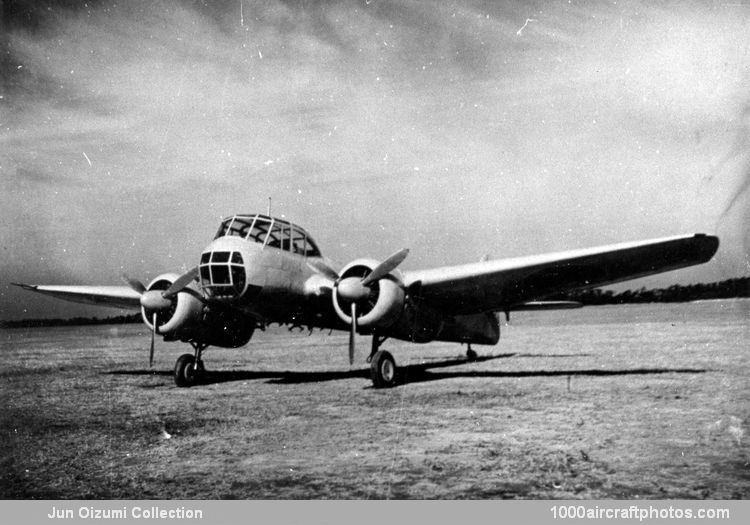11/15/2020. Remarks by Johan Visschedijk: "Development of Japan's first specialized anti-submarine patrol aircraft was initiated by K.K. Watanabe Tekkosho in 1942 when the Navy issued their 17-Shi specification calling for a three-seat aircraft with long endurance and comparatively low speed. The aircraft was to be able to launch its attacks in a fairly steep dive and to operate safely over the ocean. Furthermore the Navy demanded that it be quickly completed.
To meet these requirements Eng Nojiri opted for a twin-engined configuration and, to provide good forward visibility and ease of communication between the members of the crew, adopted a cockpit arrangement similar to that of the Junkers Ju 88. At the same time Nojiri decided to simplify production by designing wings of constant taper on the leading and trailing edges. Powered by two 610 hp Hitachi GK2C Amakaze 31 nine-cylinder air-cooled radials driving three-blade variable-pitch propellers, the aircraft was to be fitted with a new type of small search radar. However, delays in the production of this equipment necessitated the use of the larger Type 3 radar which was supplemented by a magnetic anomaly detection gear. The aircraft's standard armament included a single flexible rear-firing 0.303 in (7.7 mm) machine gun and two externally caerried 250 kg (551 lb) depth-charges, but provision was made in the nose for the installation of one or two 0.787 in (20 mm) Type 99 cannon.
Completed in September 1943, the Q1W1 prototype was found to possess pleasant handling characteristics and easily met all the Navy's requirements.
Quantity production of the aircraft-designated Navy Patrol Plane Tokai (Eastern Sea) Model 11 by the IJNAS and coded "Lorna" by the Allies-was authorized in the spring of 1944 but comparatively few Q1W1s were built before the end of the war. Tokais were operated from bases in Japan, Formosa and China to protect Japanese convoys bringing badly needed raw materials and oil from the Netherlands East Indies and Malaya, but their effectiveness was badly impaired by their slow speed and wholly insufficient defensive armament which rendered them easy prey for Allied aircraft.
The Q1W2 Tokai Model 21 was a version with wooden rear fuselage built in small numbers, while the Q1W1-K Tokai Ren (Eastern Sea Trainer), of which only one prototype was completed, was an all-wood four-seat version intended for the training of operators of electronic equipment.
A total of 153 Q1Ws were built by Kyushu Hikoki K.K. between September 1943 and August 1945."
